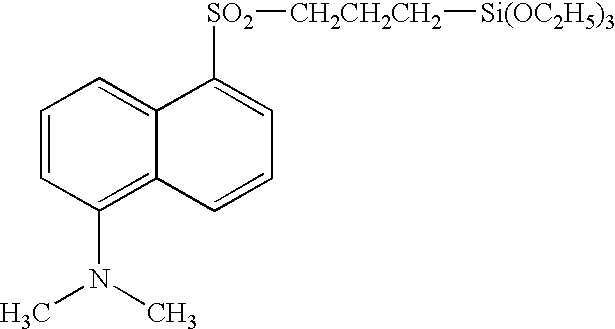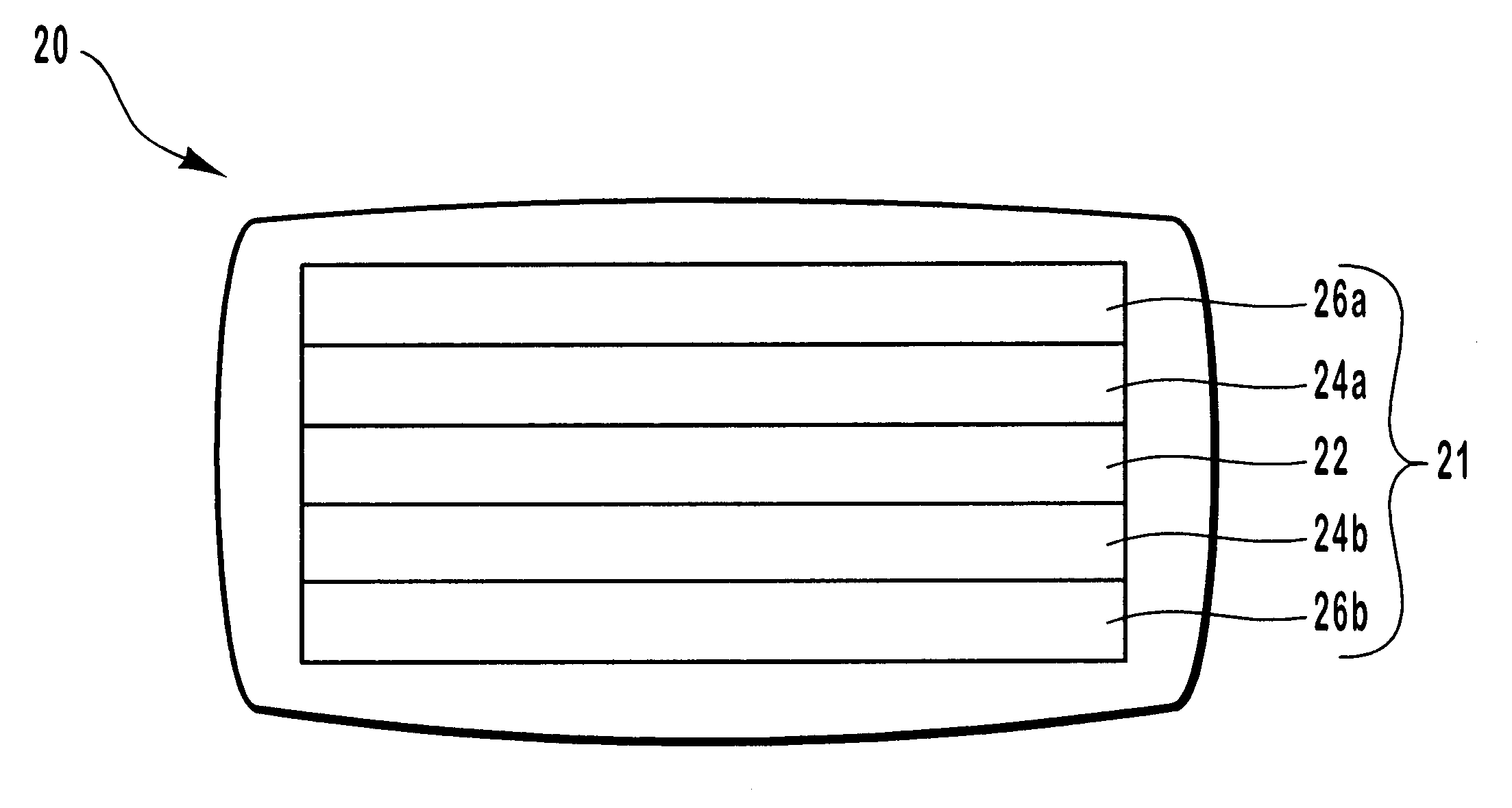Color-shifting pigments and foils with luminescent coatings
a technology of luminescent coating and pigment, applied in the field of color-shifting pigments and foils with luminescent coating, can solve the problems of difficult use together, performance of prior color-shifting/luminescent inks, and thin film particles that do not have color-shifting properties, etc., to achieve the effect of increasing the value of color-shifting pigment products, not easily duplicated, and increasing thermal stability, mechanical stability and durability
- Summary
- Abstract
- Description
- Claims
- Application Information
AI Technical Summary
Benefits of technology
Problems solved by technology
Method used
Image
Examples
example 2
FIG. 13 is a graph illustrating the angle-sensitive emission 320 of a luminescent color-shifting pigment according to the invention. The graph illustrates how changes in the incident angle of electromagnetic energy results in different emission levels. As shown, there exists a peak 322 of maximum absorption that corresponds to a particular wavelength. Thus, a given luminescent material will highly absorb at one angle of incidence but not at others. This feature of the invention allows for further customization and differentiation of luminescent color-shifting pigments and foils.
example 3
A luminescent color-shifting pigment of the invention was produced by a sol-gel process. A batch of color shifting flakes were over-coated with a layer of silicon dioxide that was sol-gel doped with a luminescent dye. In this approach, the molecules of the luminescent dye covalently bonded to the sol-gel matrix. The sol-gel coating solution had the following components:
3.0 g of 96% ethanol
1.0 g of 99+ tetraethyl-ortho-silicate (TEOS)
0.4 g of 0.1M HCl
0.5 g of a fluorescent dye having the chemical structure shown below and the chemical name of 5-dimethylamino-N-(3-triethoxysilyl-propyl)naphthalene-1-sulfonamide. ##STR1##
After combining all ingredients the coating solution was kept for 30 minutes at 80.degree. C. under continuous stirring. Then 0.5 g of the color shifting pigment was added to the solution and the mixture was exposed to an additional 30 minutes of stirring at 80.degree. C. After this process step the flakes of the coated pigment were filtered out on a Buchner funnel, ri...
example 4
A luminescent color-shifting pigment was produced by a sol-gel process similar to that described in Example 3. The flakes of the pigment had a multilayer structure similar to flake 20 of FIG. 1. The luminescent response of this pigment was measured by using two different illuminating wavelengths. These included a short wavelength excitation having a spectral radiance peaked at 406 nm (short), and a long wavelength excitation having a spectral radiance peaked at 524 nm (long).
Table 1 below summarizes the spectral response (sr) intensity of the pigment in Watt / sr / m.sup.2 for each excitation wavelength over the visible spectrum (420-780 nm) in 10 nm increments. Table 1 lists the measured background intensity along with the measured luminescent intensity of the pigment at the short and long wavelengths both before (short, long) and after adjustment for the background intensity (short-bk, long-bk). The adjustment was made by subtracting the measured background intensity from the measured...
PUM
| Property | Measurement | Unit |
|---|---|---|
| Length | aaaaa | aaaaa |
| Length | aaaaa | aaaaa |
| Thickness | aaaaa | aaaaa |
Abstract
Description
Claims
Application Information
 Login to View More
Login to View More - R&D
- Intellectual Property
- Life Sciences
- Materials
- Tech Scout
- Unparalleled Data Quality
- Higher Quality Content
- 60% Fewer Hallucinations
Browse by: Latest US Patents, China's latest patents, Technical Efficacy Thesaurus, Application Domain, Technology Topic, Popular Technical Reports.
© 2025 PatSnap. All rights reserved.Legal|Privacy policy|Modern Slavery Act Transparency Statement|Sitemap|About US| Contact US: help@patsnap.com



